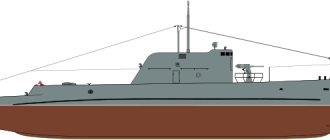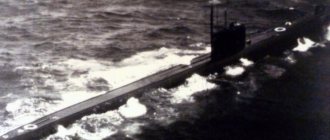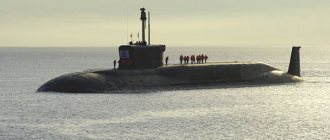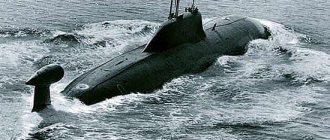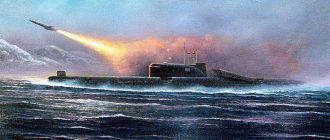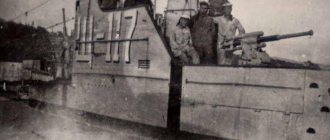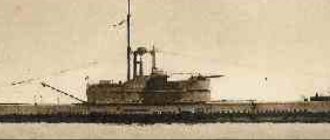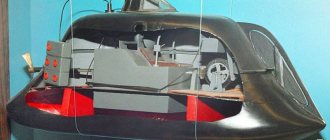“Not ammunition, but garbage!” How the B-37 submarine exploded
60 years ago, on January 11, 1962, the Soviet submarine B-37 exploded while in the harbor of the military port of Polyarny, the largest base of the Northern Fleet, located 35 km north of Murmansk. The explosion of 11 torpedoes was so powerful that not only 59 of the 70 crew members of the B-37 were killed, but also dozens of submariners from the nearby S-350 submarine, as well as several people from the shore base. Both submarines sank after the explosion. The government commission was never able to determine the cause of the explosion. Later, the submarines were raised to the surface, for some time the B-37 stood at the pier with a plug in place of the torn off bow, then it was written off and disposed of.
It is possible that in terms of the number of victims, the explosion on the B-37 should be called the largest disaster in the post-war history of the Soviet and Russian submarine fleet, comparable only to the tragedy of the nuclear submarine Kursk in 2000, when all 118 crew members on board were killed . However, the figures for the B-37 are very different - from 79 dead and 52 wounded, including one civilian, to 122 people killed: 59 B-37 crew members, 19 S-350 crew members and another 44 people on shore. According to other sources, 11 people died on the S-350, and 52 on the pier.
The Project 641 diesel submarine B-37 served in the fleet only for a very short time. It was laid down in Leningrad on July 18, 1958, and launched on November 5 of the same year. The submarine became part of the Northern Fleet on January 3, 1960, and in August 1960 took part in the only major exercise, Meteor, in the Atlantic Ocean.
On January 11, 1962, the B-37 stood at the pier in the Ekaterininskaya Harbor base of the village of Polyarny, and its crew carried out a routine inspection of technical equipment in the morning, while the bulkhead hatches in all compartments were open. Another submarine was moored nearby - the S-350, which had arrived from the factory the day before after repairs. What happened next is described in different ways. Either there was a fire on the submarine first, which led to the detonation of all the torpedoes, or one of the torpedoes initially exploded, which detonated all the remaining ammunition.
As a result of the explosion, two bow compartments of the submarine were completely destroyed, and the crew on board died as a result of exposure to a shock wave and poisoning by combustion products.
Scenes from Dante's Inferno: how a massive avalanche killed several thousand Peruvians
On January 10, 1962, an avalanche that came down the slope of an extinct volcano in Peru claimed lives...
10 January 10:23
At the same time, the commander of the submarine, captain of the second rank Anatoly Begeba, remained alive, as he was on the pier, “having left for natural reasons.” The explosion of the first torpedo threw him into the water, he was seriously shell-shocked and for some time did not realize what had happened. The commander of the BC-5, captain third rank Genrikh Yakubenko, also survived; he was summoned to the base headquarters, which was a violation of the instructions, but the government commission cleared him of blame - he was following the order of his superiors. And Anatoly Begeba himself only returned from vacation the day before - he was recalled ahead of schedule - and also, according to instructions, should not have left the submarine.
At 8:20, those in the sixth and seventh compartments and the sailors who subsequently survived felt a sharp increase in air pressure and some kind of pop, accompanied by vibration of the hull. Those on the shore also heard the bang. Technical service captain Vyaznikov later gave the following testimony to the Government Commission:
“As I approached the torpedo warehouse, I heard a bang; I felt as if a steam line had burst. At the same time, I saw captain of the second rank Begeba run to the phone and began to call, reporting that a fire had started on the B-37 submarine.”
After Begeba’s call to the operational duty officer of the squadron, a combat alarm was raised, and the submarine commander himself tried to get onto his ship, from which smoke was already pouring out. Foreman of the first article Paraskan got out through the door of the wheelhouse fence, whose face was black with soot, he himself was in a state of shock and did not answer Begeba’s questions. Paraskan later recounted what happened like this: “I felt a blow from the air pressure, saw smoke and heard a whistle. The air pressure pressed me to the ladder and the hot air burned the hand with which I covered my face. Nothing was visible. He received burns to his face and hands. It became difficult to breathe in the compartment. I climbed up the ladder, but no one followed me. Everyone was standing in the aisle, and they were apparently pressed into the stern. The air pressure continued all the time as I climbed the ladder. I heard nothing except the whistling of air. He walked up to the ladder and began to get out. The air pressure pushed me upward. He fell on the deck and was carried onto the wall by someone. I was taken to the base to the medical unit. When I reached the boiler room, I heard an explosion. While they were leading me along the pier, 3-4 minutes passed before the moment of time explosion.”
Begeba tried to get into the submarine through the upper hatch of the wheelhouse, but was unable to do so due to the acrid thick smoke, then he felt a push and found himself in the water overboard the boat. At 8:25 a powerful explosion occurred in the bow of the submarine, pieces of the hull, parts of torpedoes and mechanisms flew in all directions, killing and maiming everyone who got in the way. One of the fragments of a compressed air cylinder pierced the ceiling of a one-story house and injured the leg of a sleeping eleven-year-old girl, who after this incident remained disabled. Twisted debris was later found even several kilometers from the center of the explosion.
Emergency services from neighboring submarines and from the squadron's coastal base, as well as ambulances, arrived at the scene of the tragedy. The dead and wounded were taken out of the destroyed torpedo workshop and charging station, but those who managed to get out of the submarine at the time of the explosion and were on the upper deck of the B-37 managed to survive - they were only thrown into the water. Five sailors and cadets who were in the seventh compartment of the exploded submarine also survived, were able to independently open the hatches and get out before the emergency services arrived.
“Suspicious persons”: how traitors, spies and deserters were identified in the USSR
80 years ago, the State Defense Committee issued a decree No. 1069ss on measures...
December 27 16:27
“Five minutes after the first shock, there was a dull thud, the pressure rose sharply, the lights went out and smoke poured into the compartment,” B-37 motorman sailor Litvinov later said. “I rushed to the hatch from the ladder into the compartment, I wanted to open it and go upstairs, but I couldn’t, because someone was running along the compartment from above. When I finally opened the hatch and climbed up, the compartment was dark and smoky. I began to feel my way into the seventh compartment. There, at the open hatch, he noticed the sailor Durakov, helped him climb out of the submarine, and then climbed out onto the deck himself. Then I saw that the submarine was trimmed to the bow, the water had approached the wheelhouse. I also saw a man in the water, he was being driven by a wave towards the stern of the submarine. Then I heard the voice of sailor Durakov: “Jump!” I stood there and jumped into the water.”
During the quick rescue operation, even before the submarine sank, new victims appeared. An hour after the explosion, a strong bang was heard, the remains of the submarine began to list to the left side, then the B-37 began to quickly sink, and the submarine electrician, sailor Buzdalin, and the foreman of the second class Liverant, who carried out the rescue operation, were unable to evacuate from it in time. The first drowned when he tried to get out without a breathing apparatus and miscalculated his strength, and the second had his legs entangled in a broken mooring line. At 9.25 the submarine sank.
The government commission put forward several versions of what happened. The version of sabotage was also initially considered, but it never became the main one.
According to the first version, during loading one of the torpedoes received mechanical damage, and the submariners independently decided to fix it using a household blowtorch. As a result, the damaged ammunition exploded, causing the detonation of all 11 torpedoes. The second version is the negligence of one of the watchmen, who accidentally shot at the head of an overloaded torpedo while reloading his machine gun. Finally, the third version is a factory defect of the torpedo. No evidence of all these three versions was found, but the ship’s commander himself adhered to the third option.
“After arriving on the boat from vacation, the miner reported to me: “Comrade commander, we received not ammunition, but only garbage!” “I started to figure out what was going on,” Anatoly Begeba later said. — It turned out that all the best was loaded onto boats that went to the Atlantic to Cuba, where the Cuban Missile Crisis began. We, the second echelon, were given expired junk torpedoes, all that they could scrape together in the arsenals. And this despite the fact that we were on combat duty.”
Begeba was put on trial, and at the meeting of the military tribunal he defended himself on his own, refusing a lawyer. Despite the clearly accusatory bias of the investigation, he still managed to prove his innocence - the military tribunal acquitted the submarine commander, without, however, establishing the true cause of the disaster. Later, Anatoly Begeba taught at the Naval School in St. Petersburg. He died in 2002.
